2025 – CHW
Seeds (which will be sterile) on Acer griseum.
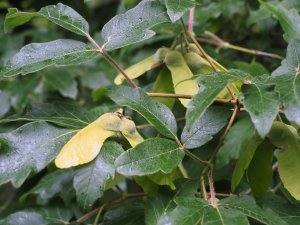
Rosa ‘American Pillar’ full out on the tower on the lawn.
2023 – CHW
An incredibly sad day. Nicky who had featured in countless diary photographs and blogs shuffling around plants. Clearly ill last night the vet said his heart had given out and he had to be put down aged only 7. Seven years and around 500 days shooting together. His hips and back legs were terrible as a puppy and I suppose I always knew that he was not destined for a long life. Buried, with the others, on the lawn.
Magnolia grandiflora now well out below the lawn together with M. delavayi.
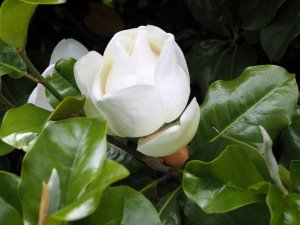
2022 – CHW
I have been visiting Ventnor Botanic Garden in June/July for around 20 years and have watched it move from council ownership to becoming a charitable trust. Despite its obvious popularity with summer visitors and the improvements to its shops, catering and outside events I am afraid that in horticultural terms it is regressing and parts of it are becoming terribly overgrown and uncared for.
The faintly woke claim on the blackboard at the garden entrance has much to say about biodiversity and nature but is clearly also a tacit admission that the place is becoming scruffy and untended.
A botanic garden surely has a duty to inform the public about its rare plant collections. This means labelling. I have not seen any new labelling of anything for around 10 years when there was last an effort to clear an area and start a new collection of temperate or southern hemisphere plants below the entrance.
The collections of grevillea, melaleuca and callistemon are now a jungle where the fittest and largest growing species have killed off the rest. The eucalyptus collection has suffered in gales, is covered in fallen deadwood, and could do with complete pollarding so people could see (with labels) what the collection actually consists of. The New Zealand native lawn is now more of a tent than a plant area and needs urgent rejuvenation. There were labels once when I visited with Susyn Andrews to identify New Zealand native plants but long vanished in the undergrowth.
The whole echium area is crying out for a new start and the circa 15 year old specimen olive plantation is, frankly, a disgrace. The specimen trees in the lawn area are, in the main, labelled but it takes time to hunt them down.
If you have recently been accepted as having a Plant Heritage national collection of palm trees you could at least label them as such? The Tree Register lists quite a number of other record trees at Ventnor and most of them do not have proper labelling either.
We all know how the public steal and move plant labels but I could show you 20 labels on the agave bank alone where the plant is long dead and/or the label is obviously on the wrong plant. Nearly all the mature agave (not to mention the Puya and Beschorneria clumps) have been flowering and then dying in recent years. Where are the replacement plants to come on?
The one bit of new planting nearest the sea and above the children’s play area which I only came upon last year for the first time is a disaster. Burncoose magnolias being decimated by rabbits. Two new jubilee planted magnolias have wire netting guards but none of the others. The recently planted camellias just below look ghastly. It is too hot and dry in this part of the garden to grow camellias or magnolias unless there is irrigation. There are good camellias in shade elsewhere.
The expanded plant sales area (even with a few echiums to sell this year) is much better but the plants are too large and far too expensive for casual visitors (£39.95 for a 10L romneya). So many things could easily be grown from seed or propagated in house.
Staff all friendly and helpful but having to pay for everything (entry and from one shop) at the café till is absolutely daft quite apart from being unhygienic. The serving area was pretty confused and chaotic even with a small queue. Terrible layout for staff working behind the counter.
I saw six volunteers or staff working in the garden. A charming old man who was removing dead bits who agreed about the labelling. All tinkering at the edges rather than getting stuck into real clearance, improvement and regeneration.
Without someone getting a serious grip many rare herbaceous plants are and already have been swamped and killed and there is no sign of regeneration and new planting where it is needed most. The entrance used to have scores of well labelled tenderish herbs. All swamped now by a few thug plants and no labels remain.
No idea what the criteria are for being a ‘botanic’ garden but Ventnor is losing it on the plant front and on the education/learning side. One could understand this of the council but surely the current charity trustees could do better! Dare I write to the chairman of the trustees?
Bowkeria verticillata from South Africa is now 15ft tall and wide with its white calceolaria-like flowers. A wonderful show today in the sun.
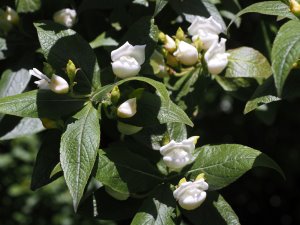
Serena and Neil visit with Lamorna who has doubled in size in a month.
Somewhat to everyone’s surprise after starting to nest so late in the season the swans have today produced three cygnets off the nest. We saw the nest get flooded in the recent rain and both parents frantically building it higher.
About halfway through potting up this year’s camellia liners.
Looking good today in the nursery:Lilium nepalense
Orders still coming in at the rate of 100 a day in lockdown. Everyone in the packing sheds is getting tired!Then back here for some filming for the weekly VLOG and topical tips for the website.
Lomatia ferruginea is absolutely laden down with flower this year after two dry summers. Normally it is one of the things which we know will be out and sell well at Hampton Court. The best thing in the garden today.
2019 – CHW
This may be Magnolia virginiana ‘Havener’? It is an evergreen tree with an overall height of 12-15ft and 8-10ft across. Only two flower buds that I can see and they look too small to be ‘Havener’ according to the reference books. The flowers are supposed to be double with a pinkish tinge. We will see. Planted in 1992.
2018 – CHW
I had forgotten where we had put Styrax americanus and how late into the season it flowers. Looking very attractive today as a smallish shrub. Its nearest equivalent Chinese species is probably Styrax wilsonii.
200 entrants in the Mad Hatters triathlon. Swimming, bicycling and running all over. Not a peaceful Sunday. Karol took a few pictures and here is a sample of what went on.




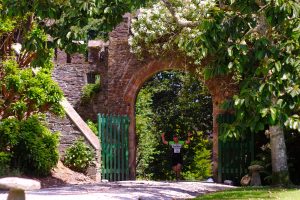


The debate rages over the new Chinese laser labelling machine (£1,500) which Karol has located to make new labels for the whole garden (eventually). The question of what size and colour the labels will be and at what cost is a difficult one. Also what information to actually put on the label itself. We are not a botanic garden so do not need accession numbers for everything and cannot afford the time and effort to compete with Windsor who have a man on this full time. The planting date and full name spelt correctly may have to suffice but a meeting with all the participants is needed to agree how we sort this all out next week. It could be a lengthy but gigantic leap forward and might even help John Williams get to know his plant names rather better and more quickly in the future. Certainly it would help with everything new which we plant
out.
Styrax japonicus the best out now. Eriogynums nearly over. Hogweed of 8ft picked. Cinnabarinum hybrids near greenhouse good.
1931 – JCW
Harrow hybrids are remarkable, great big tree shrubs and really refined pinks in many colours. Magnolia parviflora has given and is giving in three cases a lot of flowers.
My own seedling hypoleuca is about the best flower I have seen of the old magnolia.
1930 – JCW
Much as in 1915.
1915 – JCW
Rose nia R brunonis only starting. Wilson’s Fortunei wane and so A ‘Mikado’. Escallonia pteroclada coming on. Escallonia langleyense good. Mitraria fair. R moyesii goes back.
1901 – JCW
Returned after a months absence much as on the other side, only later, a fair lot of roses open, Anna Alexis an easy first, but they are old plants, Abelia floribunda very good. Several daffs not dead yet. No Nigra’s [bamboo] over 3 feet high.
1900 – JCW
Romneya coutleri just opening, everything later than on the other side.




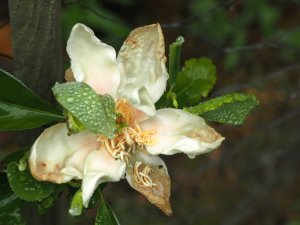
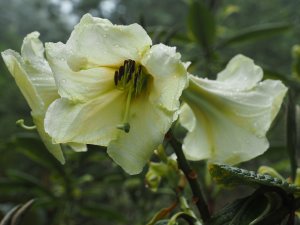
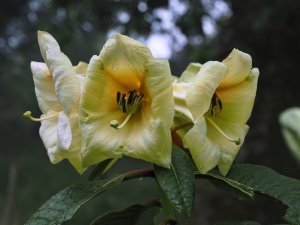
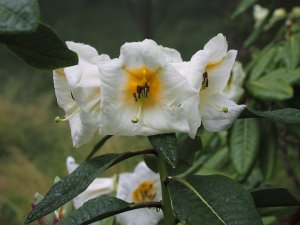
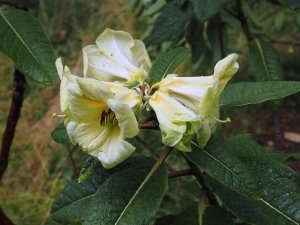
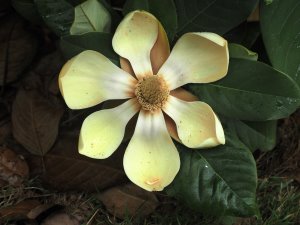
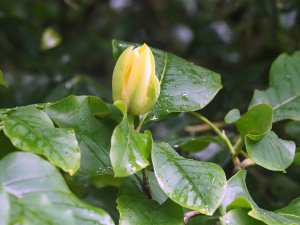
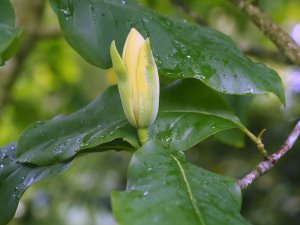
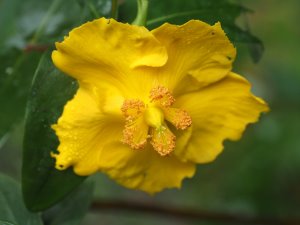
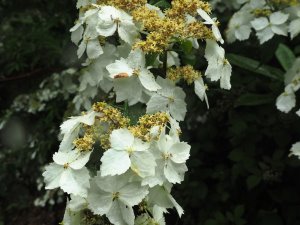
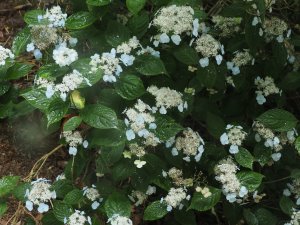
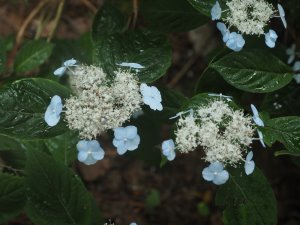
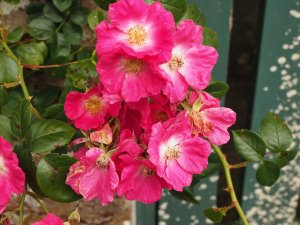
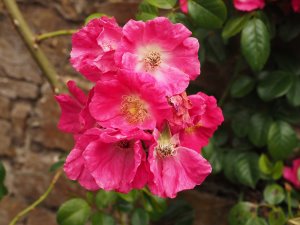
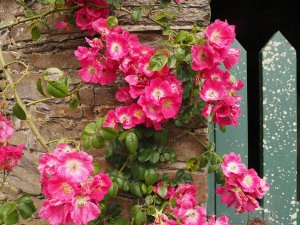

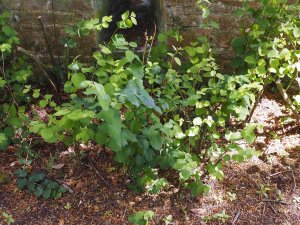
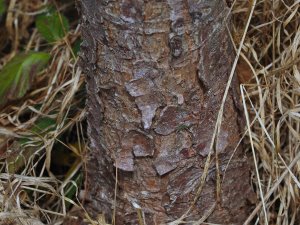
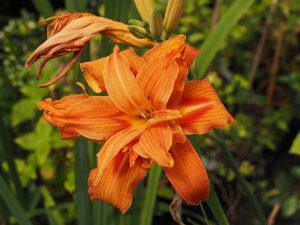
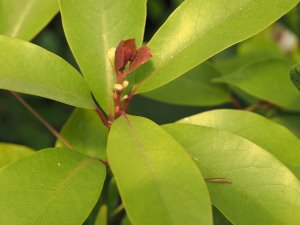
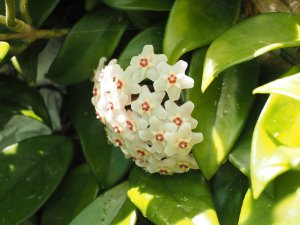
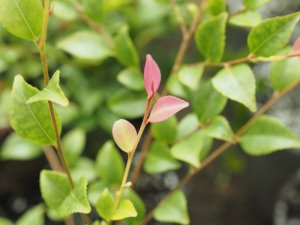
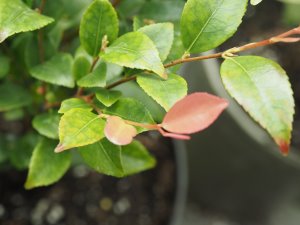
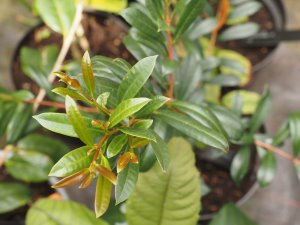
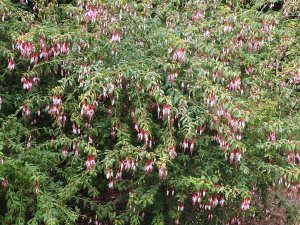
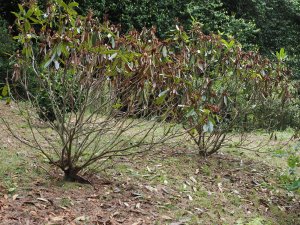
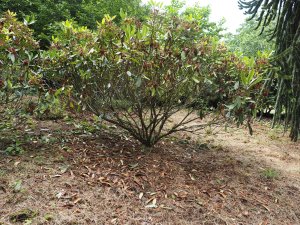
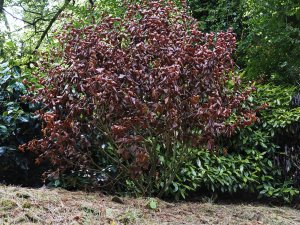

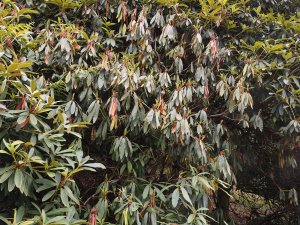
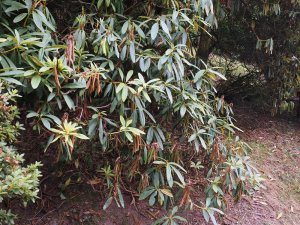
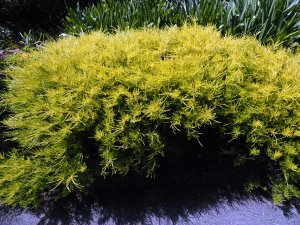
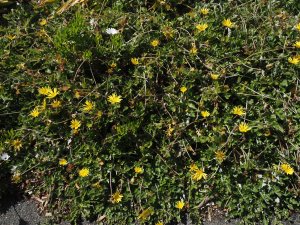
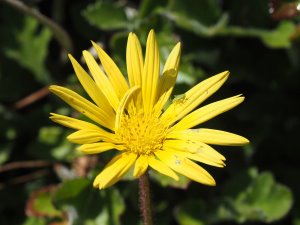
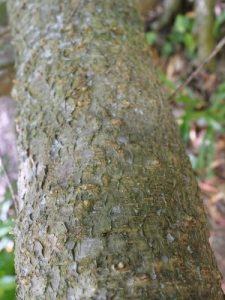
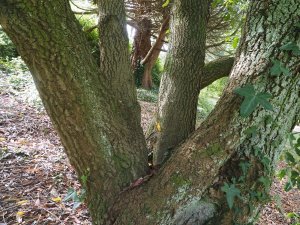
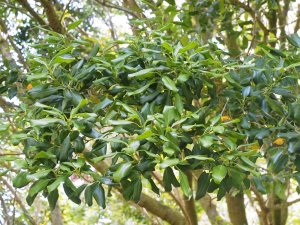
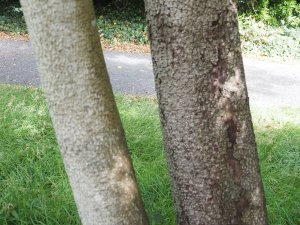
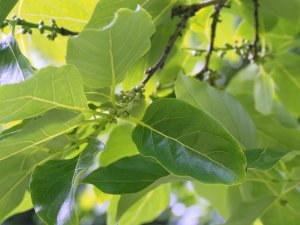
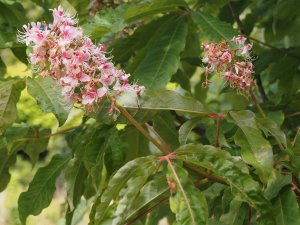

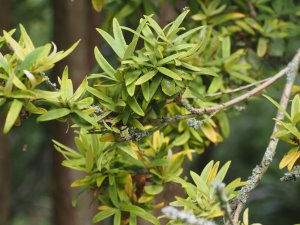
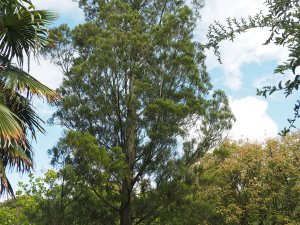

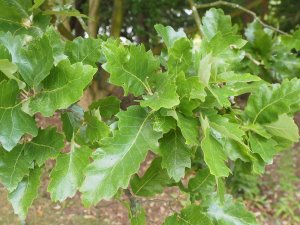
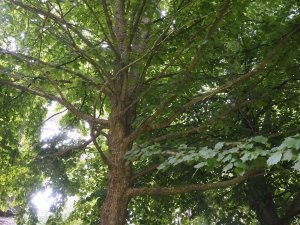
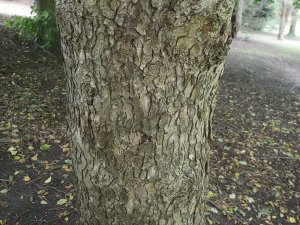
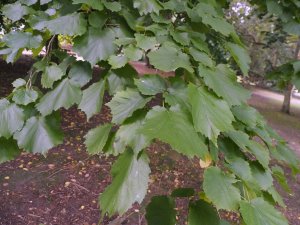
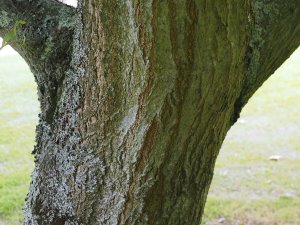
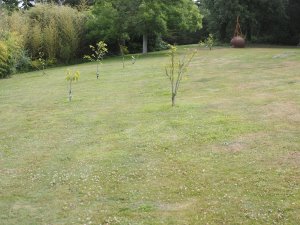
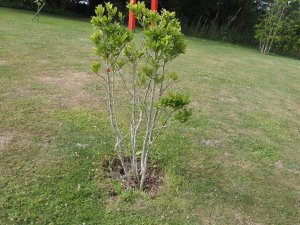
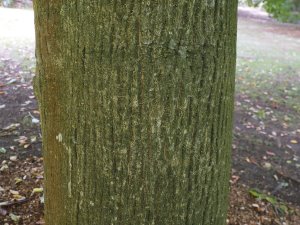
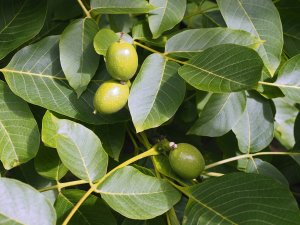
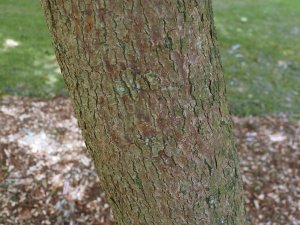
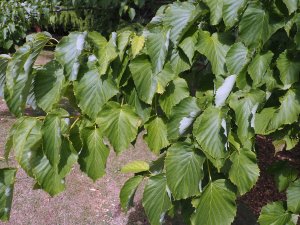
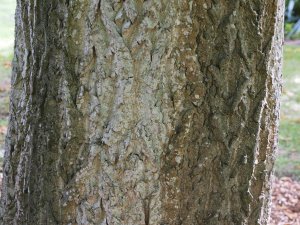
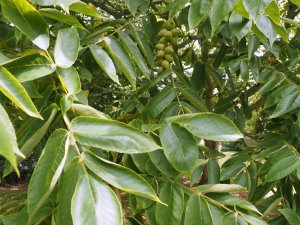
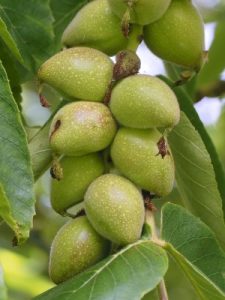
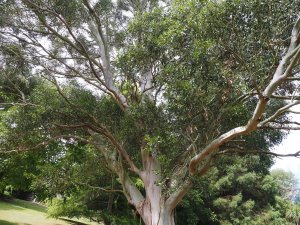
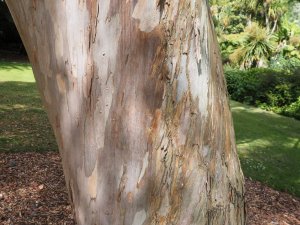
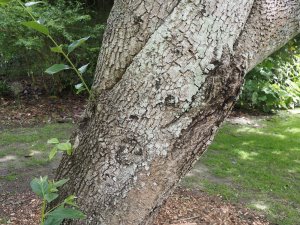
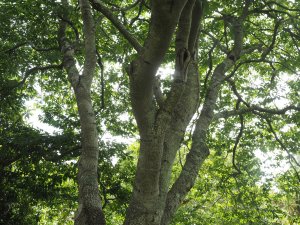
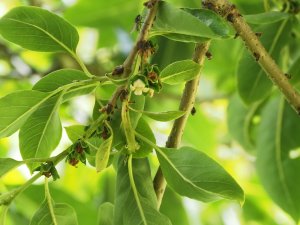
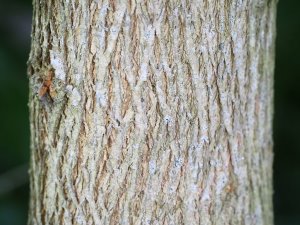
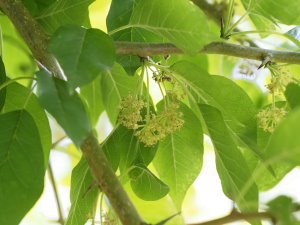
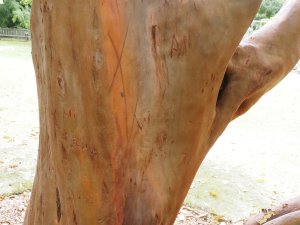
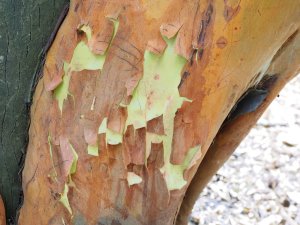
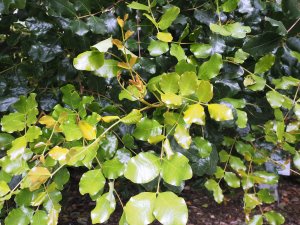
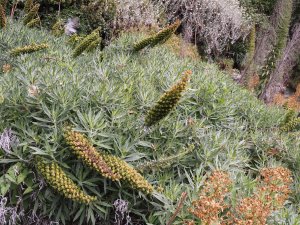
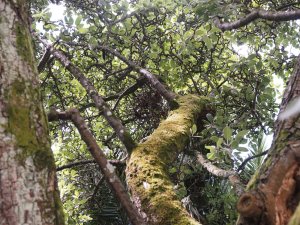

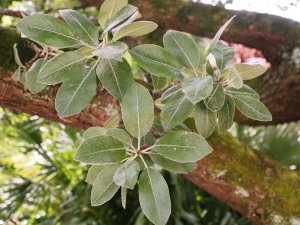

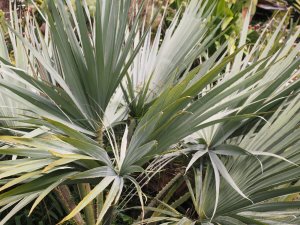
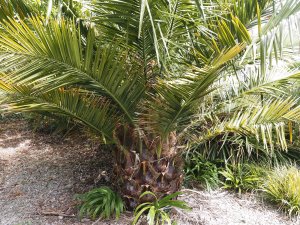
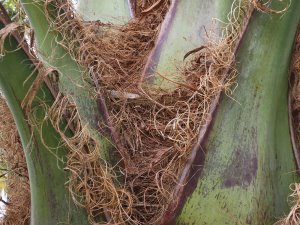
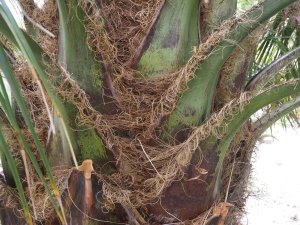
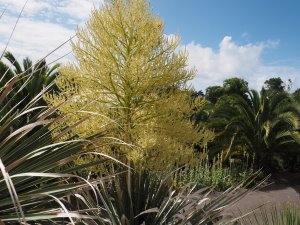
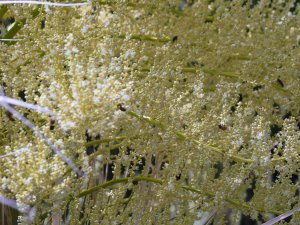
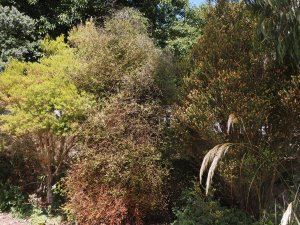
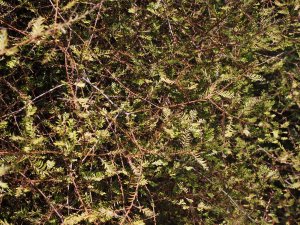
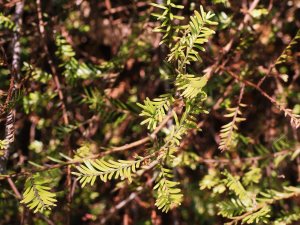

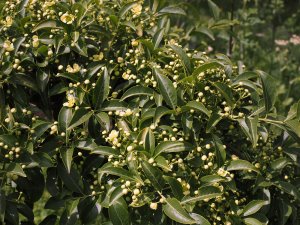
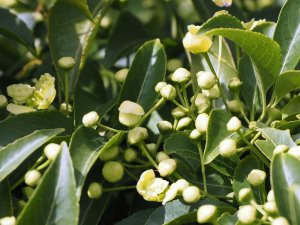
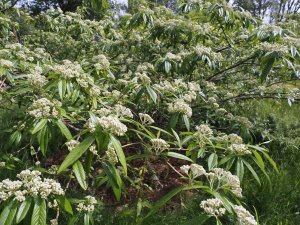
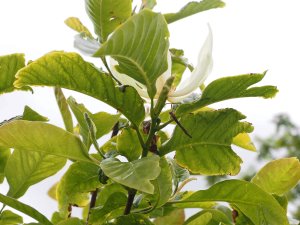
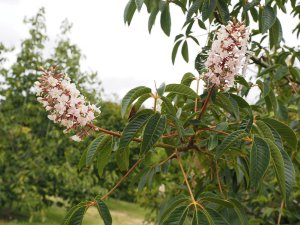
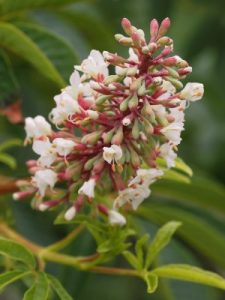
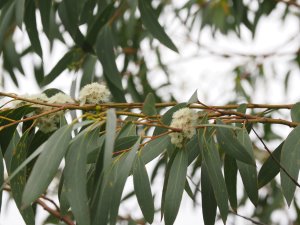
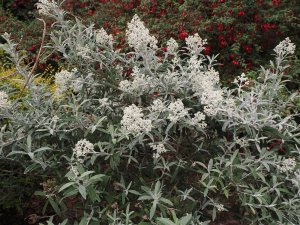
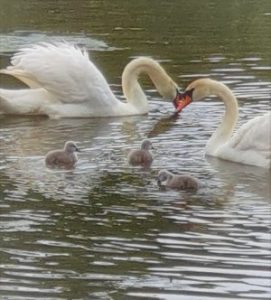
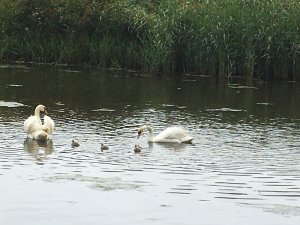
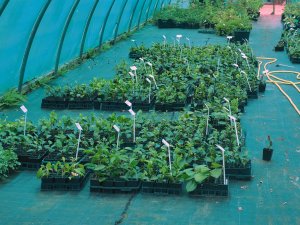
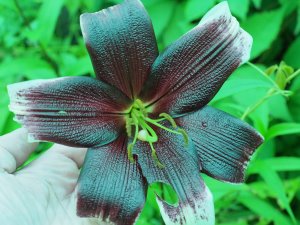
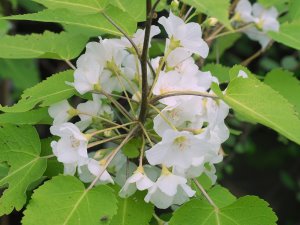
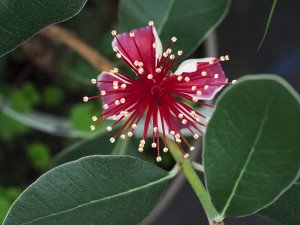
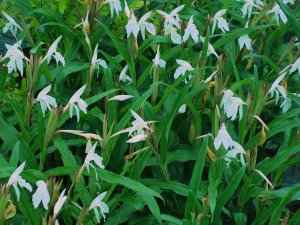
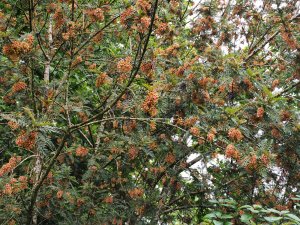
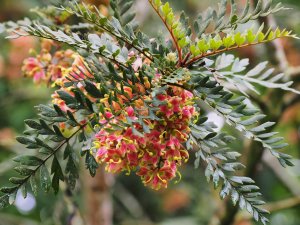
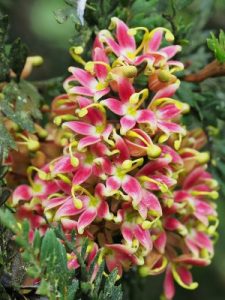
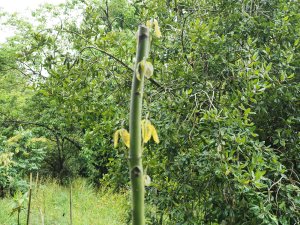
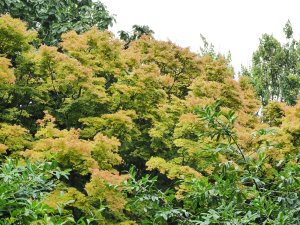
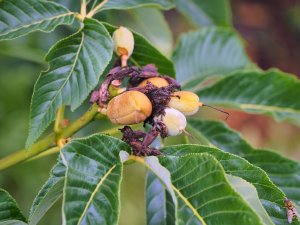
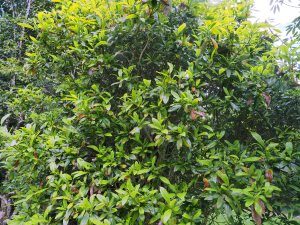
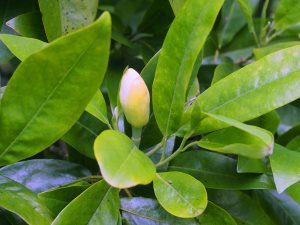
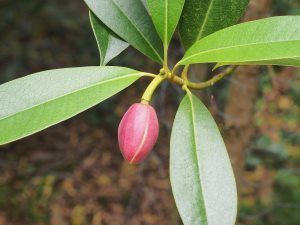

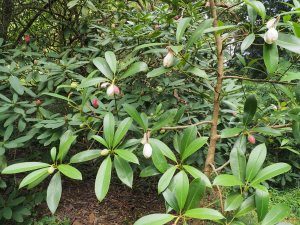
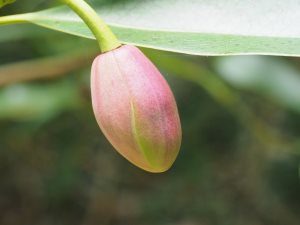
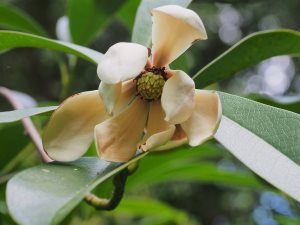
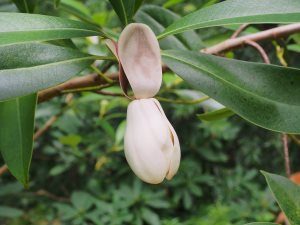
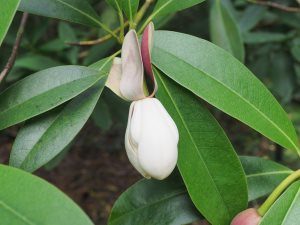
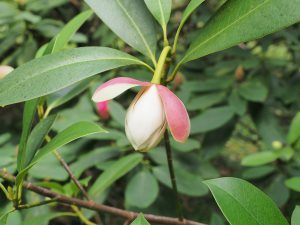
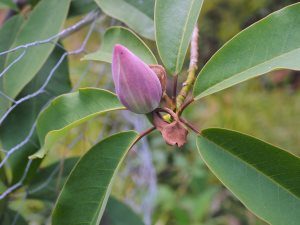
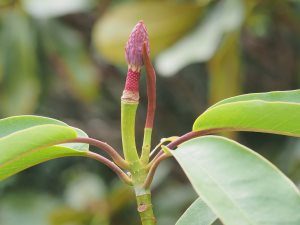
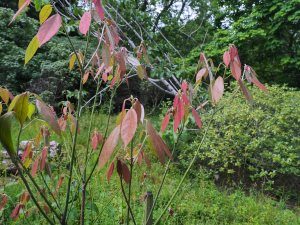
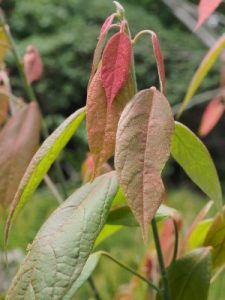
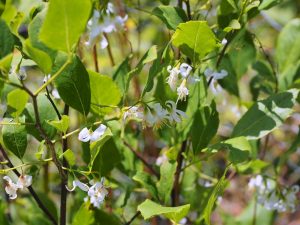
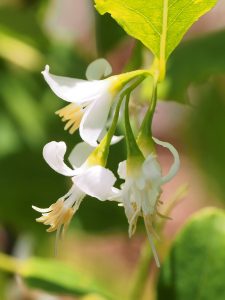
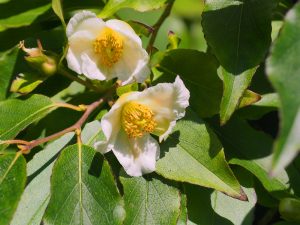
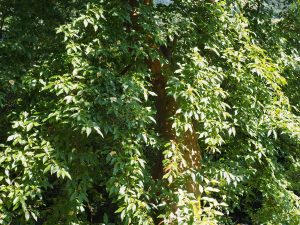
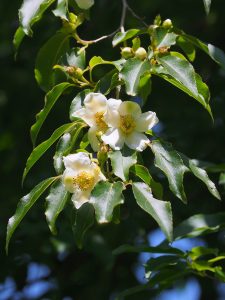
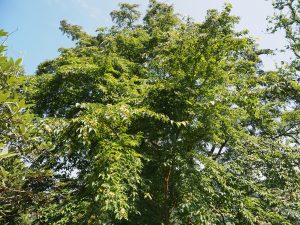
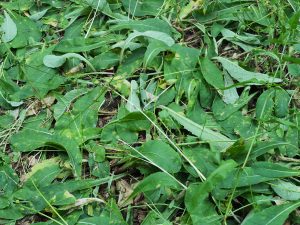
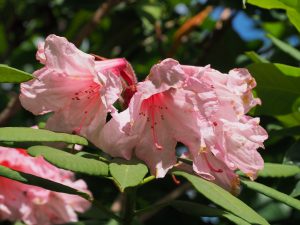
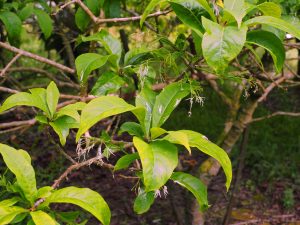
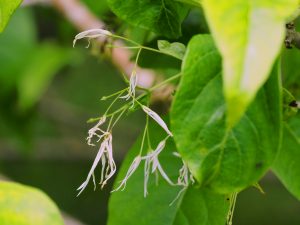
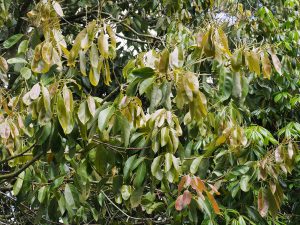
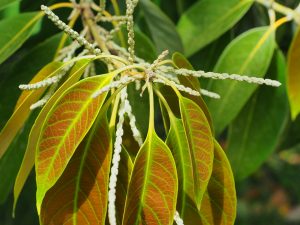
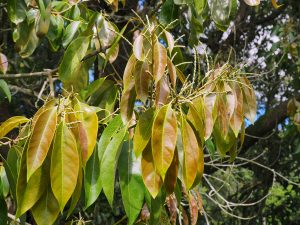
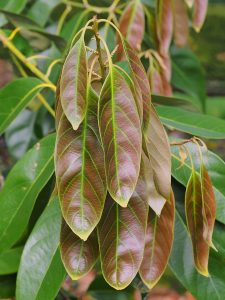
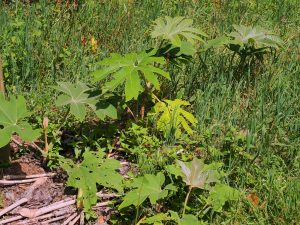
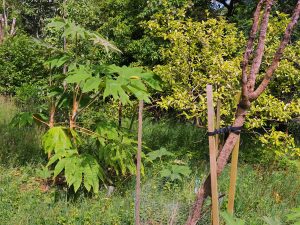
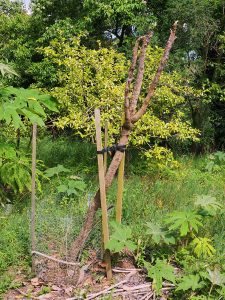
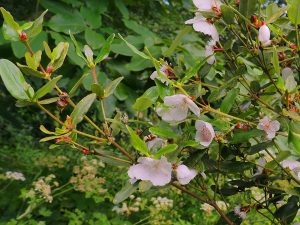
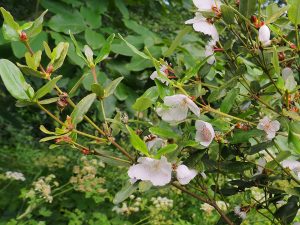

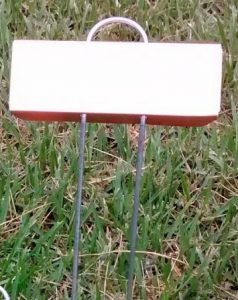
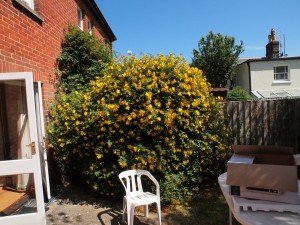
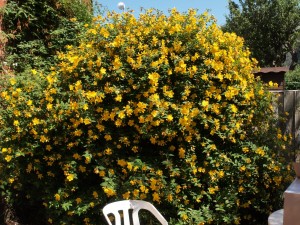
The report on Ventnor bot. garden is, I’m afraid, not untypical for some. It needs a staff which is deeply engaged in its task and can cope with overgrowing plants. To some plants: Here, Corylus colurna (sic) is a street and forest tree, similar Quercus rubra which is an important timber tree, reaching quickly large dimensions. Arbutus xalapensis sic, the x belongs to the species name. Quercus x crenata is Qu. cerris x suber in newer taxonomy, a bastard occuring rarely in I. and F. Diospyros glaucifolia is present in Strasbourg bot. garden, as labelled; same with Maclura pomifera, wide crown on impressive trunk. Dacrydium cupr. can have no pending branches as a mature tree. Ceratonia siliqua (sic) is quite frost tender, beware. (Pistacia lentiscus looks similar and is hardy here) The description fits the growth habit of Prumnopitys taxifolia with its peculiar youth phase , a curious and interresting tree. Read Reevesia sinica. Tetrapanax grows to large dimensions here too, and withstands drought.
’17: Qu. cleisto. is Lithocarpus cleistocarpa